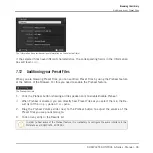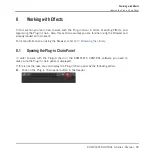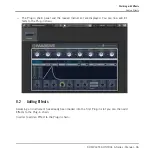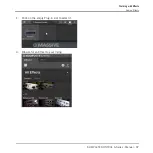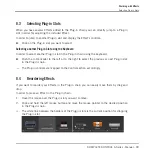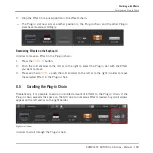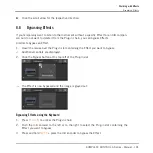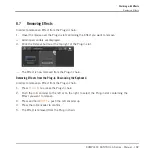
white and black keys (each representing a semitone) within an octave. By playing only the keys
belonging to some scale, you are certain to stay “in key” within that scale. Important to note
though, is that scales are not made up by absolute note values, but rather consist of relative
changes in pitch—or steps along the scale. For example, the major scale consists of
“whole step–whole step–half step–whole step–whole step–whole step–half step,” which means
that you can transpose the scale up and down a keyboard; choose any root note you want and
play the scale from there.
Chords
Polyphonic Instruments let you play multiple notes simultaneously—in other words chords. As
an example, let’s see how to build up a chord by selecting individual notes from a scale and
playing them simultaneously. In this case, we’ll use the C major scale. As we saw above, the
major scale starts with two whole steps, followed by a half step, and then three more
whole steps until it ends with another half step. We can use this knowledge to play a C major
chord by pressing the root note C, then pressing another key two whole steps above C (the E
note) and then yet another key a half step and a whole step further up the keyboard (the G
note) all simultaneously. This C major chord corresponds to a root note (C), a third (E) and a
fifth (G), which is the note interval of a major triad. By playing a triad chord you have just
learned the concept of musical harmony, where notes are stacked together into chords and
played simultaneously.
Arpeggiator Sequences
In above section you read about the combination of notes and playing them together as chords.
You can also play them like diachronic note sequences, quite like playing the harp—or
arpeg-
giator sequence
. If chords have to do with adding harmony to a note, then arpeggiator sequen-
ces add time and rhythm. Instead of playing a chord consisting of three notes simultaneously,
you can play the same three notes as a sequence in a given order (e.g., top-down) and at a
certain rate (e.g., 1/16 notes). This is also a way for monophonic Instruments to play “chords.”
Smart Play – Playing and Editing Scales and Chords
A Note about Music Theory
KOMPLETE KONTROL A-Series - Manual - 108
Summary of Contents for A Series
Page 1: ...MANUAL ...

